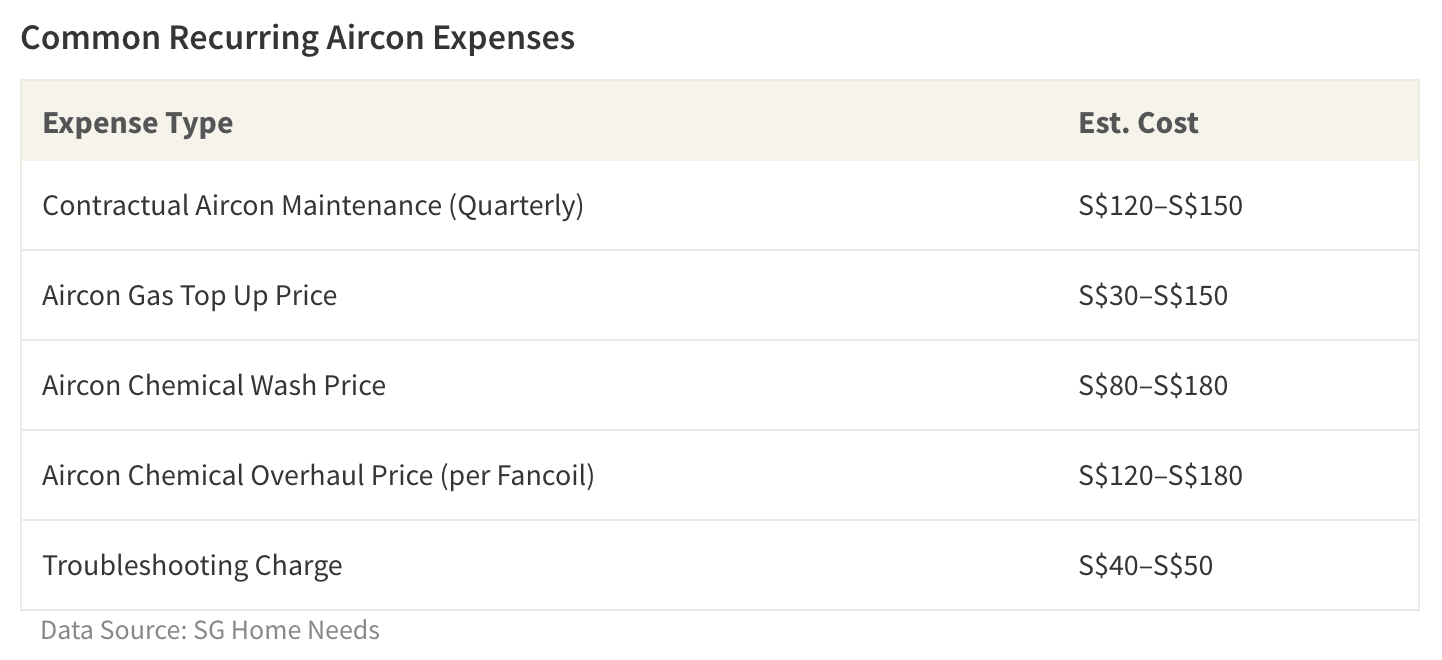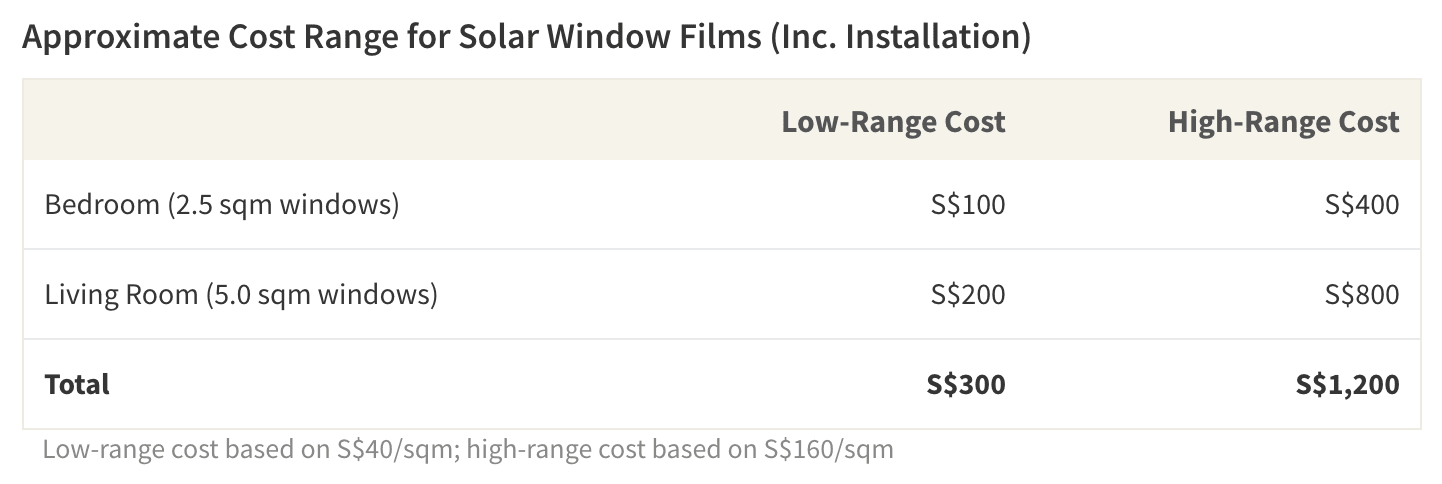Which Aircon Alternatives Actually Work–And Save Money?
At the peak of summer, with temperatures hovering around 32°C, nothing may seem more important than keeping your flat nice and cool. However, with most wall mounted aircon systems ranging from S$1k–S$3k+, buying an air conditioner isn't an easy option for everyone. Even more, currently-owned units require maintenance and cleaning, and their use can quickly bump up your monthly electricity bill. Overall, these expenses can feel quite daunting.

As a result, many Singaporeans look for alternative ways to keep their homes cooler–but are there any methods that are truly as powerful, while still remaining cost-effective?
Solar Films Can Reduce Room Temperature by 5°C
While most people are familiar with typical suggestions for indoor cooling–taking advantage of natural shade, buying a few low-maintenance plants, optimising airflow–fewer consider options that involve any kind of home renovation. Installing solar window films, however, is an great way to lower temperature without using electricity or even requiring maintenance. While professional installation is usually required (which comes at a fee), quality films can last over 20 years, block up to 79% of solar heat and 99% of UV rays, and even sustain indoor temperatures as much as 5°C below that found outdoors.
Solar films in Singapore vary substantially in price, ranging from S$40–S$160/sqm. Given typical flat dimensions, this translates to about S$100–S$400 for a bedroom (approx 2.5 sqm windows) or S$200–S$800 for a living room (approx 5.0 sqm windows). While these sums may at first seem high, even the maximum–S$1,200 for both 1 bedroom and living room–is less than half the cost of a high-end aircon system. Taking into account aircon maintenance and cleaning fees, installing solar films would actually save money over time.

Cooling Paint – Another Way to Enjoy a 5°C Drop
A few years ago, researchers from Ngee Ann Polytechnic developed a paint product with incredible heat reduction capabilities. "X-Cool," as it's called, can reduce interior temperature by at least 5°C when painted on the exterior walls of a building. While X-Cool is primarily designed for corporate buildings, equally powerful residential variants have emerged since, including Nippon's SolaReflect paint. Such products can be found for about S$100–S$120+ for a 5L can, which is more expensive than non-solar alternatives–especially given 5L doesn't cover a very large surface area. Nonetheless, the cost of multiple cans is still far less than most aircon systems, which means investing in cooling paint could save you money in the long run.
It's worth mentioning that it's against regulation to paint HDB corridors or exterior walls. For those who aren't able to utilise outdoor cooling paints, there are a few indoor options. These products usually need to be diluted and mixed into another paint, which takes a bit more effort.
Powerful Fans Won't Cool, But Can Blow Air 3.5 mps
For those who aren't interested in a larger project (convenience has value in itself), buying a powerful fan may be worthwhile–to an extent. By nature, fans do not actually cool the air. Instead, they push air throughout the room, eliminating stagnant heat and creating a "windchill effect" over skin. While the temperature of a room is unlikely to change, a powerful fan can blow air as fast as 2.5–3.5mps, maintaining peak force for at least 0.5m (~2ft) beyond their face.
Powerful fans can be a bit expensive. The Dyson TP04 model–known as a market leader–costs an incredible S$899. Cheaper fans have lesser force, and therefore, less of an impact. Fortunately, several credit cards offer rebates for spend with furnishing vendors, which can help to mitigate price. For example, both Citi Rewards Card and OCBC Titanium Card offer 4 miles per S$1 spend with vendors like IKEA and Lazada–which translates to 3,596 miles for that same Dyson purchase. CIMB Platinum MasterCard also offers 10% cashback on purchases with vendors like Harvey Norman, COURTS, Best Denki and more–all of which sell a variety of fans.
Conclusion
Ultimately, there are a few cost-effective alternatives to a traditional aircon system, but they do involve a bit of extra work in the short term. If you do have experience with home improvement projects, investing in solar films or cooling paint could be a great way to save money, while also cooling your home. It's worth mentioning that in all cases–both for an aircon system and the posed alternatives–upfront cost can be quite high. Because of the potential for long term savings, you may want to consider taking out a personal loan or drawing from your savings account, if needed. If you can responsibly keep up with payments and/or avoid fall below fees, you're investment in alternatives now may save you S$100s over the upcoming years.
